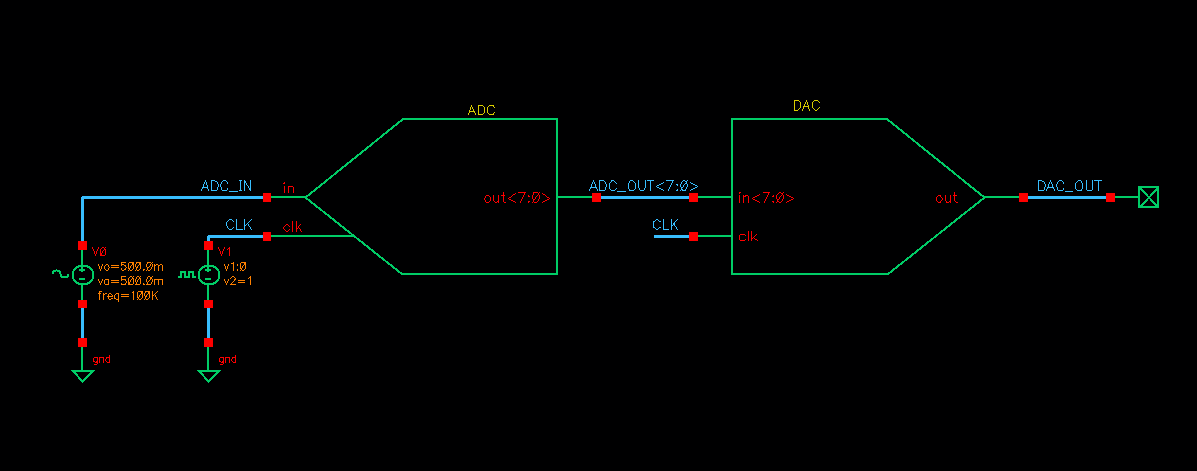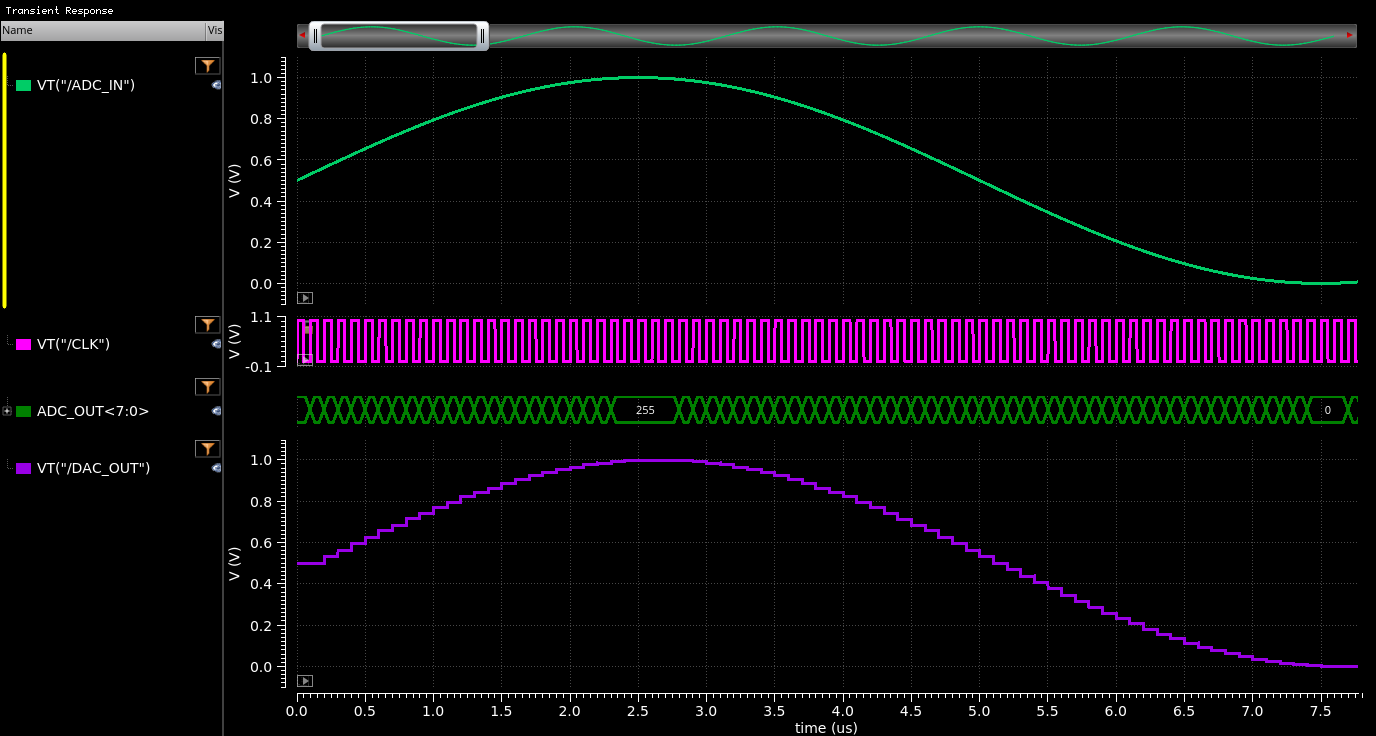Digital-to_analog (DAC) Verilog-A model
This article contains Verilog-A model for a Digital-toAnalog Converter (DAC).
Usage:
- Create a new cell in Library Manager named DAC and select cell type Verilog A;
- Copy and paste the code provided;
- Modify bits variable to define DAC resolution;
- Specify vmin and vmax variables to define the input signal swing;
- Specify vdd and vss variables to define output voltage levels;
- Specify tt and td variables to define rising/falling edge times and output signal delay;
- Specify dir variable to be +1 for rising and -1 for falling clock edge triggering;
- Perform Check and Save;
- A cell symbol will be created;
- Instantiate DAC cell into your design;
- Perform Check and Save and run the simulation.

ADC-DAC testbench

ADC-DAC simulation result
Cell name: DAC
Model type: Verilog-A
1// N-bit Digital to Analog Converter
2// LSB is <0>
3// Change binary_bits variable for your needs!
4// Author: A. Sidun
5// Source: AnalogHub.ie
6
7`include "constants.vams"
8`include "disciplines.vams"
9`define bits 12 // define number of binary bits here
10
11module DAC(out, in, clk);
12 parameter real vmin = 0.0; // minimum input voltage (V)
13 parameter real vmax = 1.0 from (vmin:inf); // maximum input voltage (V)
14 parameter real td = 0; // delay from clock edge to output (s)
15 parameter real tt = 0; // transition time of output (s)
16 parameter real vdd = 5.0; // voltage level of logic 1 (V)
17 parameter real vss = 0; // voltage level of logic 0 (V)
18 parameter real thresh = (vdd+vss)/2; // logic threshold level (V)
19 parameter integer dir = +1 from [-1:1] exclude 0;
20 // 1 for trigger on rising edge
21 // -1 for falling
22 localparam real fullscale = vmax - vmin;
23
24 output out;
25 input [`bits-1:0] in;
26 input clk;
27 voltage out, clk;
28 voltage [`bits-1:0] in;
29 real aout;
30 integer weight;
31 genvar i;
32
33 analog begin
34 @(cross(V(clk) - thresh, dir) or initial_step) begin
35 aout = 0;
36 weight = 2;
37 for (i = `bits - 1; i >= 0; i = i - 1) begin
38 if (V(in[i]) > thresh) begin
39 aout = aout + fullscale/weight;
40 end
41 weight = weight*2;
42 end
43 end
44 V(out) <+ transition(aout + vmin, td, tt);
45 end
46endmodule